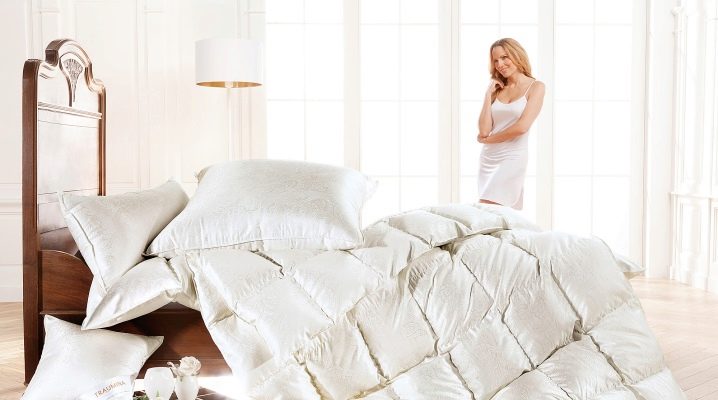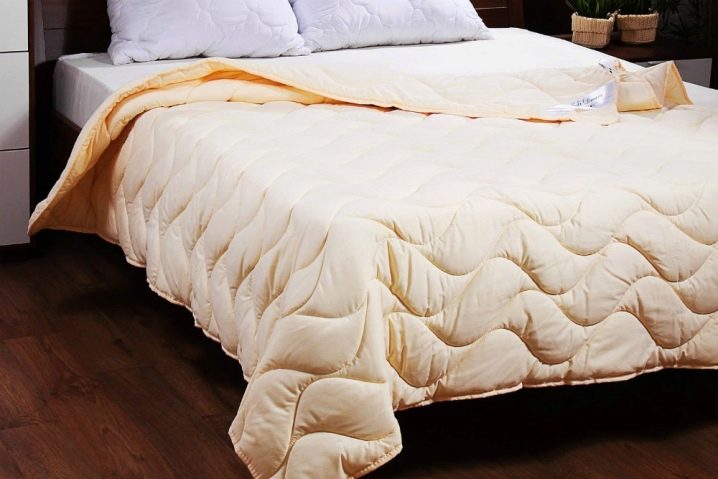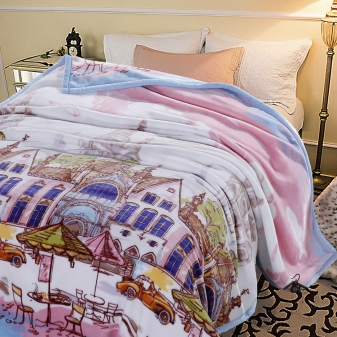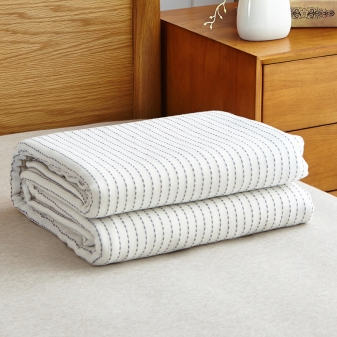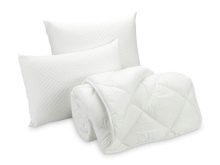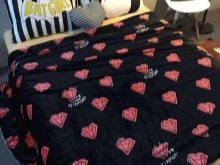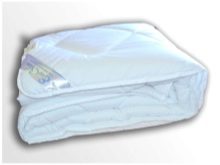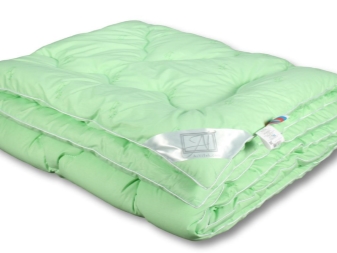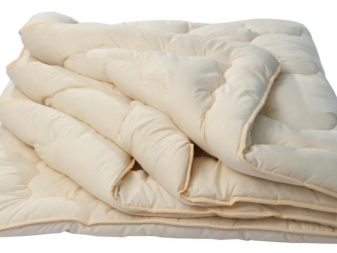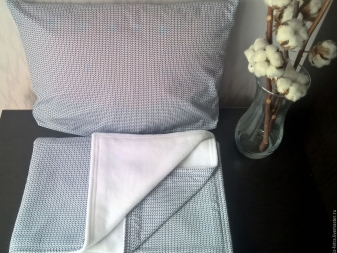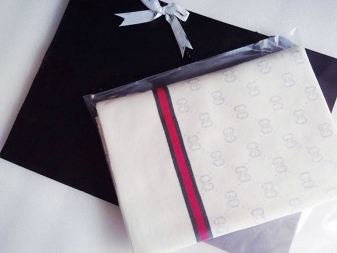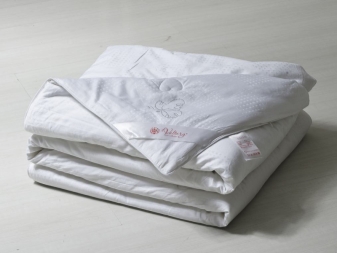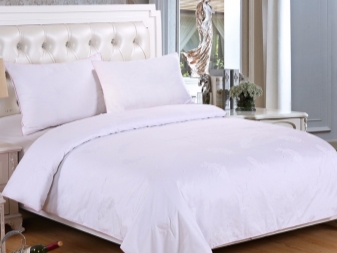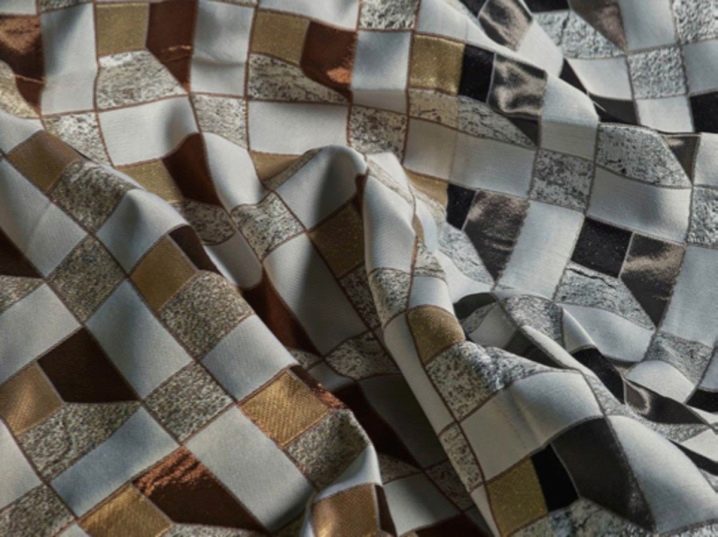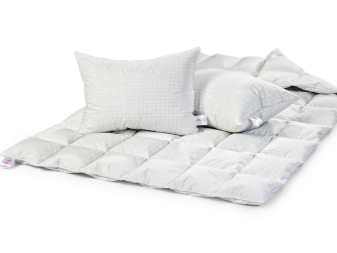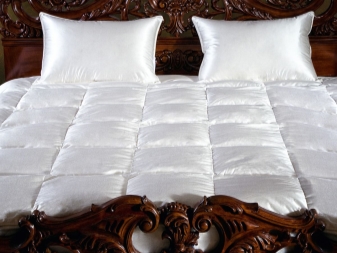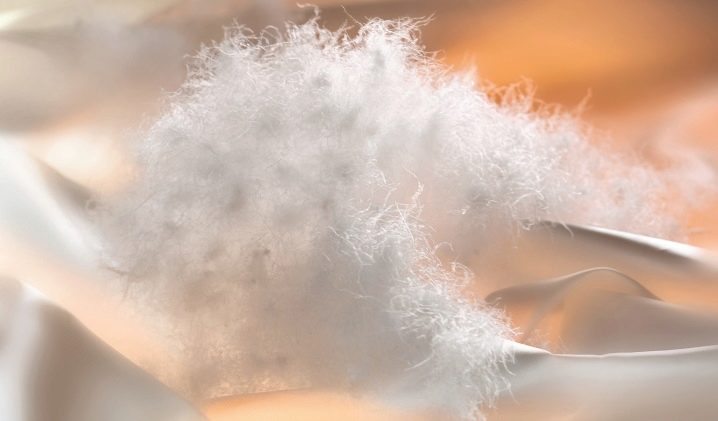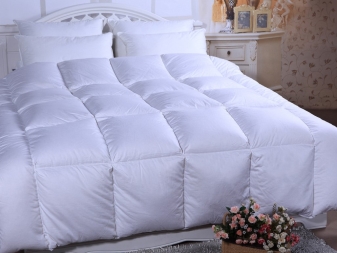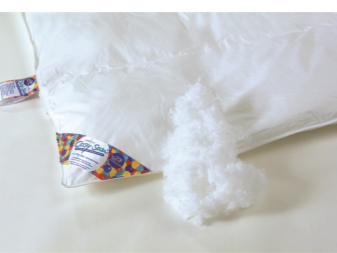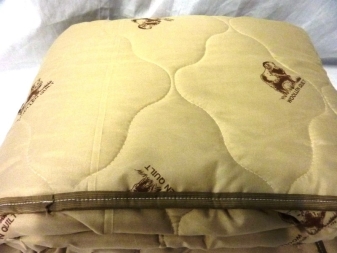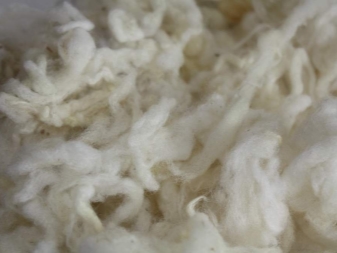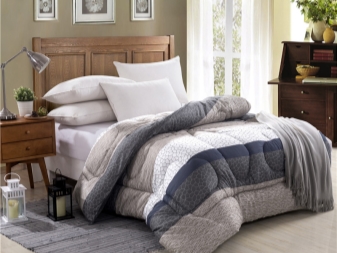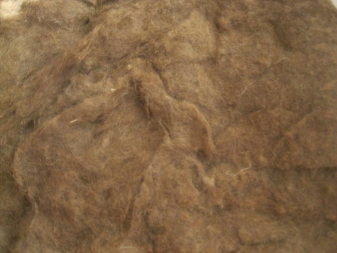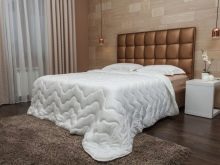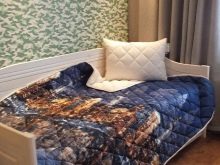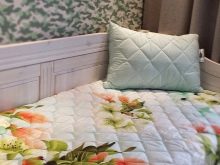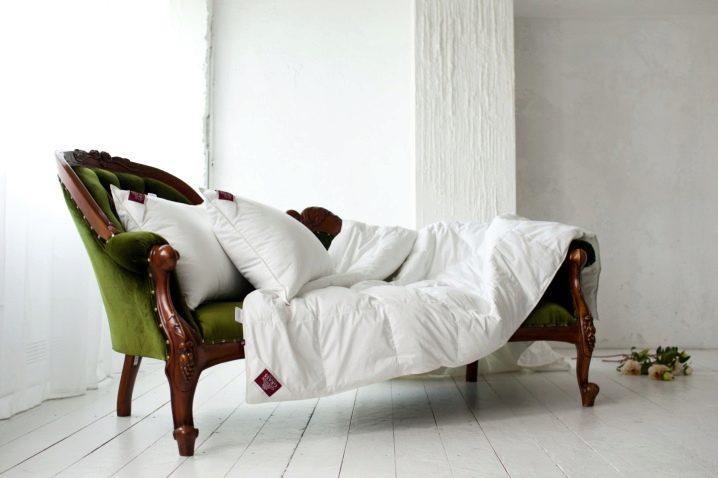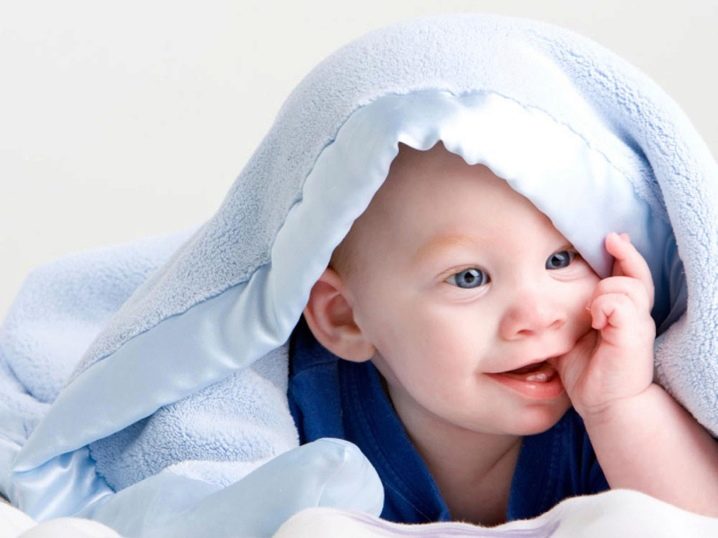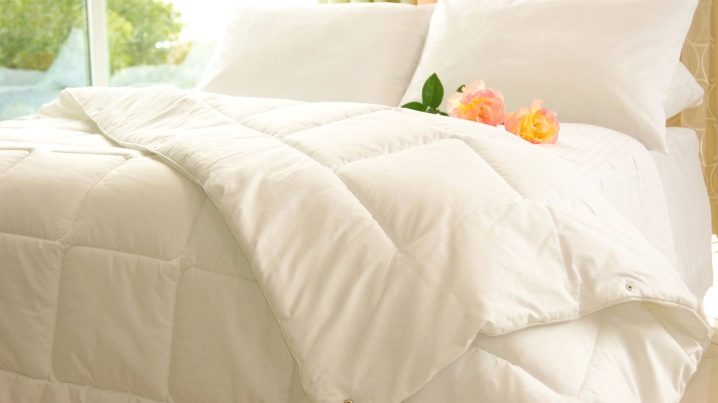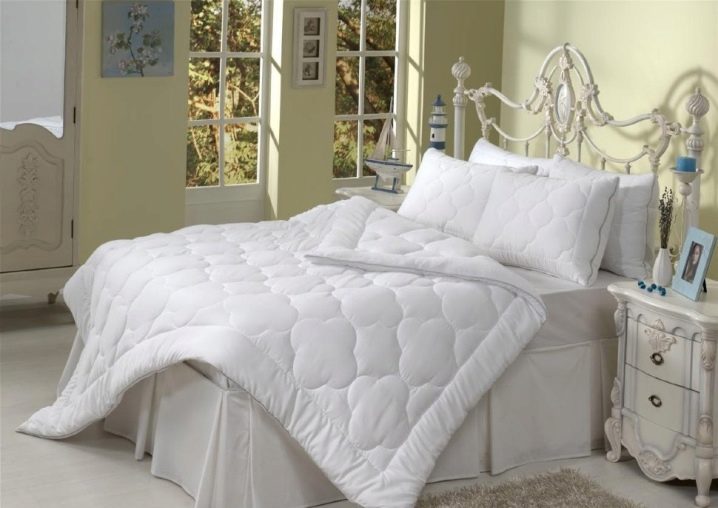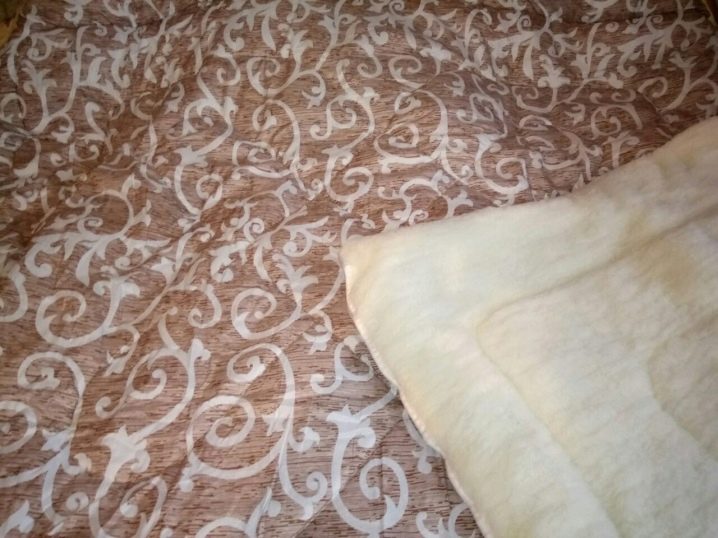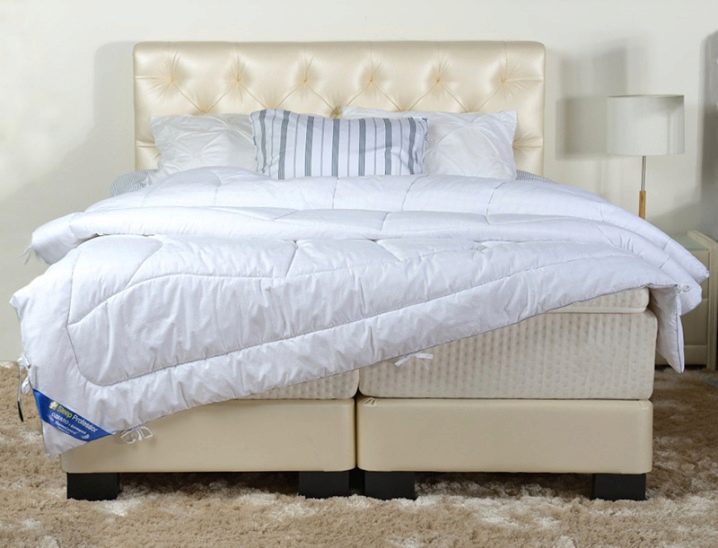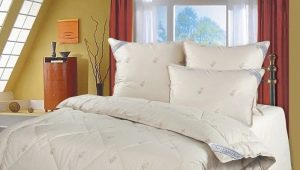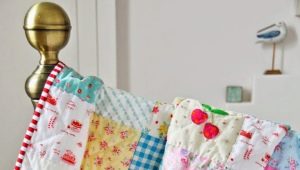Summer and winter blankets
On average, a person spends almost a third of his life on sleeping. Therefore, it is very important to feel comfort, comfort and security, resting from the bustle of the day.
Many people do not think of their sleep, not wrapped in a blanket from head to toe, and it does not matter that there is a sultry night outside the window without the slightest breeze. Only having covered with a blanket, this category of people feels safe and quietly falls asleep. Even if you do not consider yourself to be one of them, then sooner or later you will face the question of choosing a summer and winter blanket.
It’s impossible to do without this attribute on a cold winter night, it’s so nice to burrow into warm soft textiles, warm up and fall asleep. Summer nights are also pretty cool and damp, so a fluffy blanket will be most welcome.
Let's understand the specifics of summer and winter models of similar bedding, and also find out which options can be used all year round, regardless of whether it is cool, hot or cold in an apartment.
Materials
Variants of materials used for the manufacture of summer and winter blankets, there are a large number. Your feelings and comfortable rest will depend on the composition of the filler.
For the production both natural materials and fillers of synthetic origin are used. Both options have their supporters and followers.
An important point when choosing material for summer and winter type of blankets is the presence or absence of allergies in humans. For example, in the event of allergic reactions to down or animal hair, it is not recommended to purchase products from sheep or camel hair or on duck down. It is better to opt for artificial materials, such as holofiber or tinsuleyte.
For summer
The blanket for the summer is a thin and light textile. Thanks to the special material from which it is made, it will not be hot to fall asleep, hiding with a similar sleeping attribute.
The most popular materials used for the production of summer blankets are:
- Bamboo. Due to the fact that this fabric consists of hollow fibers, it is perfectly breathable and absorbs excess moisture, therefore you will not experience a feeling of dampness or moisture.In addition, the bamboo canvas is different thermostatic features, that is, under it cool to sleep even on a hot night. This material also has the ease and softness, and therefore eliminates the extra load on the human body during rest, and this leads to an excellent rash after a hard day.
The composition of bamboo blankets include antibacterial substances, and some manufacturers add to this filler honey pectin, known for its beneficial effects on the skin.
- Cotton. Cotton blanket perfectly absorbs moisture, being at the same time hypoallergenic material. To care for such a textile accessory is very simple, just wash it in the washing machine. Terry blanket will look like new, not sitting down and not rolling after washing, so you can safely wash it. Thanks to this feature, terry sheets can be used without a duvet cover.
- Silk helps the skin to breathe, and also contributes to the process of its recovery. It will be an ideal option for people with excessive perspiration, as it is able to absorb moisture.Silk filler is a hypoallergenic fabric that is resistant to the formation of bacteria and the spread of dust mites.
The most important thing is to acquire a quilt made of natural silk, since the artificial analogue does not possess the above qualities.
- Viscose refers to natural fillers, as it is produced during the processing of wood. Such a blanket is soft and silky to the touch, it practically does not electrify. Compared with cotton counterparts, a viscose-based blanket absorbs moisture better. The disadvantages include insufficient strength. Therefore, this type of model is not recommended to wash, it is better to use dry cleaning.
- Lightweight woolen or duvets, the cover for which is made of satin can also be covered in summer. This fabric protects against overheating, so under this veil will not be hot in the summer.
For winter
When buying a winter blanket, many wonder what is the warmest option. The most common materials are:
- Pooh perfectly retains heat, has practicality and ease of care.Duck or goose down is used as a filler. Goose-based blankets are very soft, and duck-based are heavier and more massive. The most expensive option is fluff loon, as it, among other things, has a healing effect.
- Synthetic material is one of the warmest fillers, and also has increased practicality. It does not dampen, so they can hide even in rooms with high humidity. In addition, it can be fearlessly used by people prone to allergies, as it does not cause allergic reactions and any manifestations. Synthetic blanket perfectly tolerates washing and does not fall down, unlike natural counterparts. The most popular option is holofiber, which is similar in quality and characteristics to swan's down. Some manufacturers infiltrate such aloe vera filler. Phytoncides that are present in such a plant, can cope with disease-causing organisms during human sleep.
This impregnation helps to overcome viral diseases and allergic manifestations, strengthening the immune system and calming the nervous system, and also has a pleasant aroma.
- Sheep's wool - very pleasant to the touch and warm filler.This option is also used for medicinal purposes, as it helps to cope with diseases of the musculoskeletal system. In addition, this material does not absorb unpleasant odors, dust does not accumulate in it.
- Camel's wool. This filler is perfectly breathable. Even if the room will be very warm, you will not wake up sweating, as excess moisture will be absorbed into the blanket. Such a model has a long service life, as over time, camel hair does not roll.
All-season options
On sale there are universal models that can be used throughout the year. A distinctive feature of this type of blanket is that it is cool even under hot summer, but warm and cozy in winter.
These all-season blankets are a complex execution and are two-sided designs. They are made of two parts, which differ in different heat capacity. Usually these elements are attached to each other using buttons, buttons or ties.
One side of this textile attribute is a lightweight version, but with sufficient density to make it comfortable to hide during the demi-season period.The second side is very thin and light and is used in the summer.
On a cold winter night, they are simultaneously covered by two elements, fastened together. In the spring or autumn, a lightweight model is used, and in hot weather it is better to use the light summer version.
All-season model has recently appeared on sale, but is gradually becoming very popular, gaining a large number of positive reviews due to several advantages:
- Versatility - one blanket can be used continuously for four seasons.
- Easy to clean - to wash and then dry two thin elements is much easier than one thick cover.
- No problems with storage - this option is used for a whole year. Moreover, its individual parts are better and easier to store, since they take up less space than the summer and winter model together.
- Efficiency - despite the fact that this kind of view is somewhat more expensive than the summer or winter version, in general, you will spend a smaller amount by purchasing two blankets for the price of one.
Dimensions
There are several sizes in which the blankets differ.
Baby is presented in two models:
- for newborns it differs in square shape and can have the following parameters: 90x90 cm or 120x120 cm;
- The standard children's model may be a little smaller (100x135 cm) or a little more - 110x140 cm.
A one-and-a-half or single bed is suitable for one adult. Its standard parameters are 140x205 cm. This option is perfect for a duvet cover of domestic production. You can also find one and a half models of slightly larger sizes:
- 150x200 cm;
- 150x210 cm;
- 155x200 cm;
- 155x215 cm;
- 155x220 cm;
- 160x210 cm
Since most manufacturers of bedroom sets produce blanket covers in the size of 160-220 cm, any of these options will fit perfectly.
Double is designed for couples and has the following parameters:
- 172x205 cm;
- 175x205 cm;
- 180x210 cm
European will allow two people to comfortably hide, even if they are both accustomed to wrap themselves in a blanket. The European size is 200 by 220 cm. The royal one is distinguished by a huge size - 220x240 cm, it will suit the happy owners of a large bed, the size of which starts from 180 cm.
To make it easier for you to hide, focus on your height. The length of the sleeping attribute must exceed your height by at least 40 cm, and the width must be at least 140 cm.
You can choose the size of the blanket, given the size of the bed or bed, then the width of such a textile product should be wider by about 50 cm.
How to choose?
By purchasing this or that type of blanket, you can be guided by the opinions of people who have already managed to appreciate the advantages and disadvantages of various options for this kind of textile. Your choice may also be affected by the material used to make a blanket specifically for the summer or winter period, as well as all-season options.
When choosing not a universal model, but for a specific season, it is important to consider the following factors:
- How dense the filler is - the higher this figure, the warmer the blanket will be.
- The level of heat - a similar figure is indicated on the label in the form of points or suns.
- The material used as a filler (for example, for the summer period the silk or bamboo blanket will be optimal, and for the winter time - a down or woolen blanket).
- The ability to pass air.
- Weight - for the summer produced lightweight options.
- Hygroscopicity (ability to absorb moisture) - for the summer season should be used filler, which is highly hygroscopic.
- Execution option - for the summer models in the form of a rug are more preferable, for winter the best option is quilts.
Having decided on a summer, winter or all-season option, pay attention to the appearance of the blanket. A few tips will help you with this:
- If you choose a blanket that has a filler, then look at the technology of its tailoring. It can have the following design: quilted - the lines are stitched in the form of parallel lines, cassette - the lines are made in the form of cell-squares and kostep - the line is stitched in the form of a pattern.
- The most preferred is cassette and kostep, since in this case the filler will not wrinkle and stray when used daily and will last you a long time.
- Material of which the cover is made. It is better to opt for natural fabric, for example, coarse calico, satin or jacquard. Such material breathes well, perfectly holds the filler in the case, will serve you for a long period of time, and is also distinguished by softness and density.
- The presence of the label on it should indicate such information: the manufacturer, the country of manufacture, the specifics of care, the material of which the cover and the filler consist.
- No unpleasant smell.
- High quality tailoring - the threads should not stick out in different directions, the lines should be smooth and neat, the filler should not climb through the cover.
- The data contained on the tag, which is sewn into the blanket, must correspond to those indicated on the label.
Do not rush, choose products deliberately, and then you can buy the best option for summer and winter blankets, which you will be comfortable and shelter. And of course, you will leave only positive feedback and impressions from such an acquisition.
How to choose a blanket for summer and winter, you will learn from the following video.
